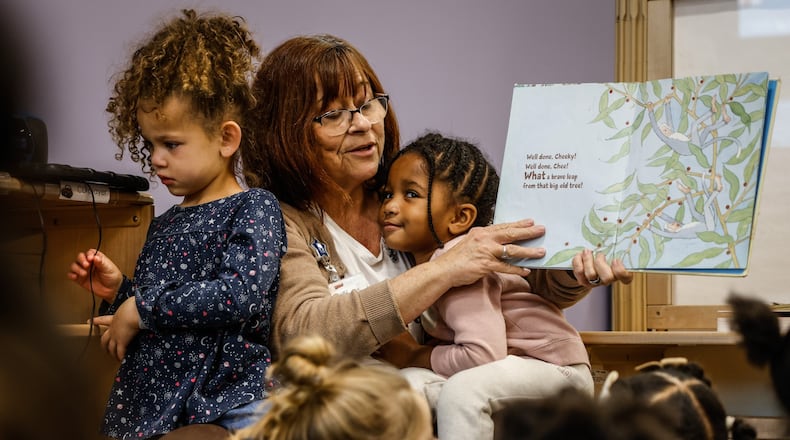“There’s a lot of interest and a lot of commitment, and a lot of people want to see some change happen in this community,” said Vanessa Ward, president of Omega CDC. “We already are seeing some of that beginning, which is a great story that we build upon.”
Omega CDC, a nonprofit tied to Omega Baptist Church, has submitted an application to the U.S. Department of Education requesting about $30 million in funding from the Promise Neighborhoods grant program.
Omega CDC purchased the 30-acre United Theological Seminary more than a decade and a half ago, and the nonprofit has opened a new senior housing facility and a new Hope Center for Families on the property.
The Promise Neighborhoods program seeks to help improve academic and developmental outcomes for children living in communities of concentrated poverty, turning distressed neighborhoods into areas of opportunity.
A major program goal is to ensure young people have access to high-quality schools and strong systems of family and community support to help them attain a good education and transition to college and a career, the Department of Education said.
The program has a “place-based” focus on specific impoverished geographies, and Omega CDC has established a new “Hope Zone” that includes some or all of about 17 neighborhoods in northwest Dayton.
The zone’s primary boundaries are Gettysburg Avenue, Siebenthaler Avenue, Riverside Drive, Riverview Avenue and James H. McGee Boulevard.
The Hope Zone in northwest Dayton is home to about 6,700 kids and 3,400 families, Omega CDC said, and the federal grant would help pay for programming and services intended to increase students’ academic performance.
Omega CDC would work with three Dayton Public Schools that are inside, or just outside the edge of the Hope Zone: Edwin Joel Brown Middle School, Fairview Elementary and Thurgood Marshall High School.
The federal funds would help cover the cost of success planning for each individual student, plus “navigators” who work one-on-one with kids, evaluating their academic performance, attendance and other important indicators, Ward said.
Some interventions would focus on prenatal education, early learning, K-12 education, expanded out-of-school learning and support, and post-secondary education support.
Other services could focus on mental health, nutrition, school-community partnerships, community development and community safety.
Promise Neighborhoods grant-seekers need to secure a 100% match of the federal funds, and Omega CDC obtained commitments valued at three times that amount, or about $90 million, Ward said.
The program is very competitive, but Ward said Omega CDC has a strong application, especially since it included 33 memorandums of understanding with partner organizations.
The Hope Zone initiative could increase opportunities for more home visits for pregnant and new moms, more infant and toddler child care and more free preschool slots, said Robyn Lightcap, executive director of Preschool Promise Inc., one of the partner organizations.
“It would allow us to offer parenting Play on Purpose groups to help parents navigate the challenges of raising young children,” Lightcap said. “It would allow us to improve wages so highly qualified teachers want to work in the child care and preschool programs in northwest Dayton.”
She said the Hope Zone will help more children have the educational experiences they need to grow and thrive.
Learn to Earn, another partner nonprofit organization, says it will support the Hope Zone by offering technical assistance, capacity building and resources.
“Education is the foundation for a thriving economy, and in Dayton, Ohio, a catalytic investment is necessary to address widening disparities in outcomes for students in our highest poverty neighborhoods,” said Learn to Earn Dayton CEO Stacy Wall Schweikhart.
The city of Dayton, which describes itself as a key stakeholder and financial contributor, has committed to making $22 million worth of investment in the Hope Zone through 2028.
This includes investments in public safety ($11 million), housing ($4.5 million) and public roadway and infrastructure improvements ($3.5 million).
Ward said the Hope Zone model will be utilized regardless of whether or not Omega CDC secures federal grant money, but things won’t move as quickly without it.
Omega CDC right now is trying to raise $1 million, with about half already pledged, to try to double the number of children the Hope Center serves, from the current 500, Ward said.
“This begins to implement the Hope Zone proposal,” she said.
About the Author



